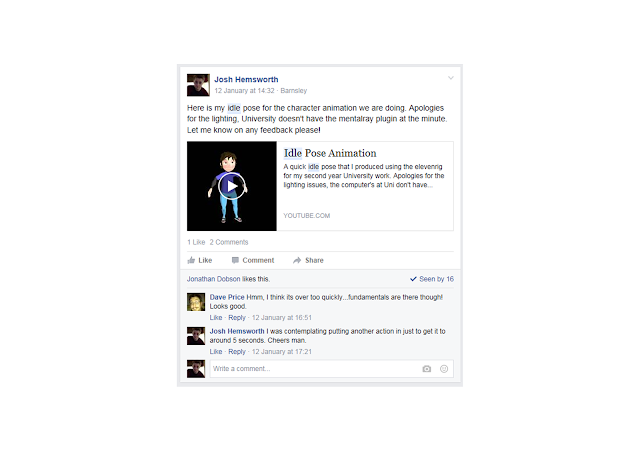Part 4 - Superhero Punch Animation
This was one of the most engaging animations I worked on. Prior to this animation, my other three have been based solely on technicalities and not adding and character. With the nature of this clip, I could experiment with many principles, especially squash and stretch which would lead to the
character showing through.

The poses go from
a squashed curled position, jumping up, punching with a stretch and landing into a strong superhero position with fists on the side of his waist. The main area that required work on this clip was definitely the positioning of the right fist. Getting this part in the right position through the ascent and descent in an arch like motion was difficult, even with a motion trail path. I think this is because I really struggle with my timing. I feel I am strong with the technicalities and getting good positions, but my timing is usually the most time consuming part of my animations. I could literally spend a good week trying to work out spacing to get drag and overlap on my characters.
Below is my peer feedback which I incorporated into my work, which was refreshing to get more this time around.
As Dave pointed out, the elbow was rectified. This was occurring due to the previously mentioned problem, the hand and its positioning. After spending so much time focusing on this area, I left out the elbows. (Lesson learnt number 2).
Shannon then pointed out the leg popping which is when the character rises again and settles. Kneecaps are as important as elbow joints, don't forget about them as they can really affect the overall look of the rig. I originally thought it was something wrong with the torso movement, which goes to show the minute details that can really affect it. With a little more time, I would have liked to do the starting pose prior to winding the body in a squash position. This would have ultimately gave a much stronger, burst with a delay in the start of the animation with a quick explosive punch burst in the middle.
Here the stretch stage at mid punch can be seen, and just exactly how much I exaggerated it. This is not noticeable when watching, but after trying without the stretch it looks wrong.

















